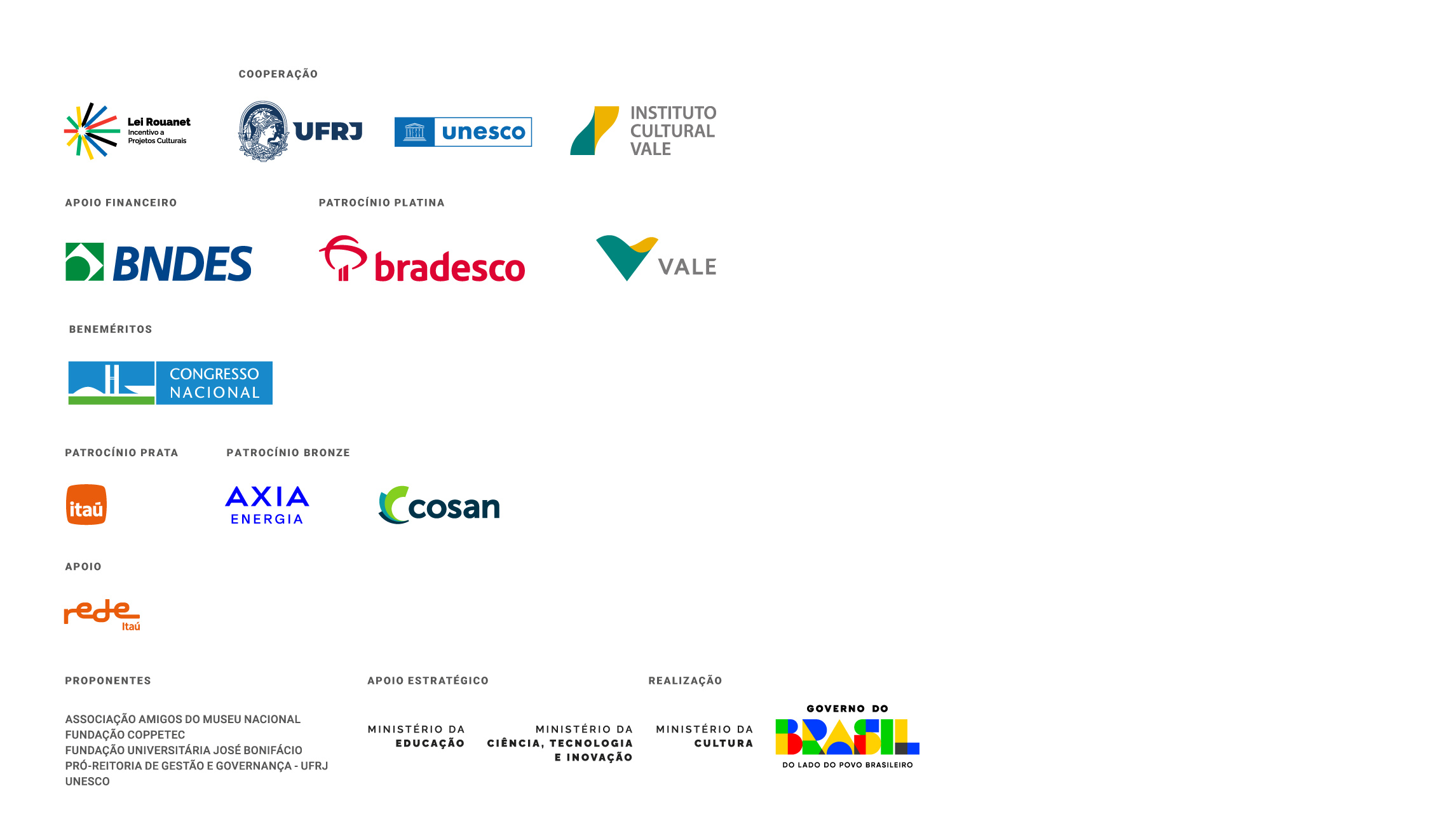Main façade of Museu Nacional is restored
Free programming at the Quinta da Boa Vista celebrates Brazil’s Independence Bicentennial
On September 2nd, another significant moment in Brazilian history takes place at the São Cristóvão Palace, headquarters of the Museu Nacional/UFRJ. Its main façade is fully restored, ready for the celebrations of Brazil’s Independence Bicentennial
The monument-building where the Portuguese royal family once resided is currently undergoing a major restoration coordinated by the Project Museu Nacional Vive – – a cooperation between the Federal University of Rio de Janeiro (UFRJ), the United Nations Educational, Scientific and Cultural Organization (UNESCO), and the Vale Cultural Institute. It has financial support from BNDES, a platinum sponsorship from Bradesco and Vale, and several governmental agencies..
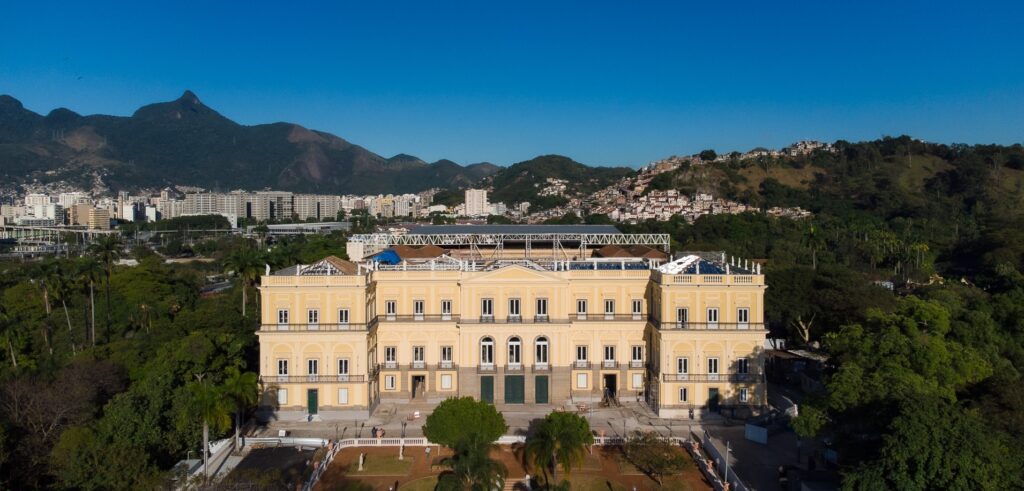
To celebrate this moment within the Brazilian society, the Project will hold this Friday, September 2nd, the #MuseuNacionalVive no Bicentenário program, with temporary exhibits, educational activities, and free cultural presentations Among the highlights is an exhibition of large minerals, newly incorporated into the collection, occupying the entrance hall of the Palace (Bendegó meteorite room). For the first time after the 2018 fire, the public is invited to approach the building and observe – from its central doors – a diverse set of rescued minerals and recently purchased items.
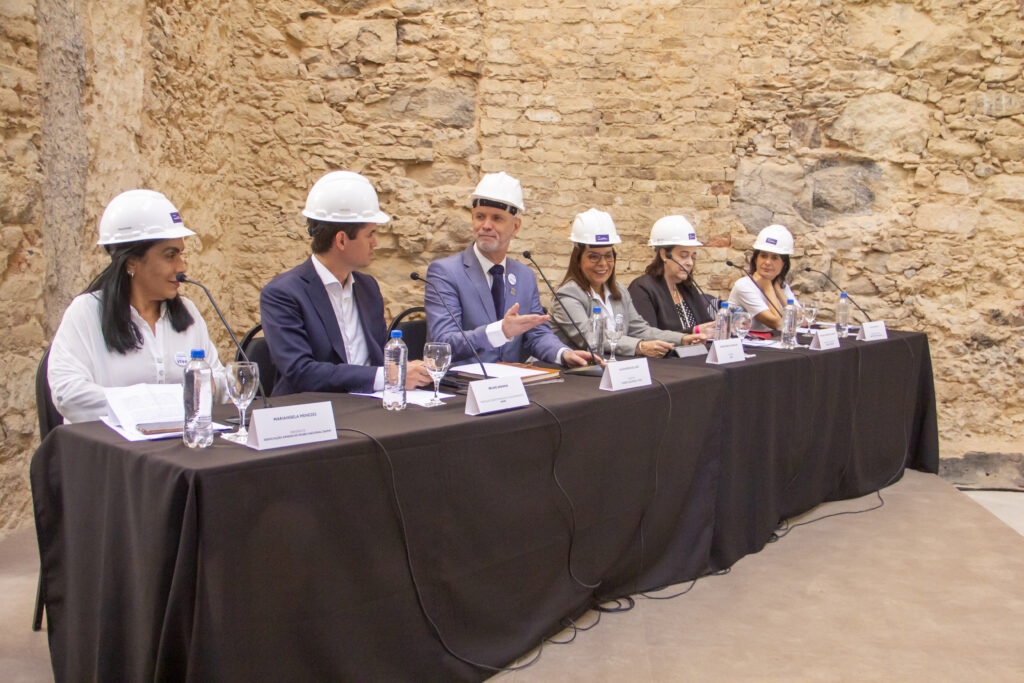
“It is emblematic and exciting to welcome the public with free activities to admire the main façade of this Palace, with its immeasurable relevance to the history of our country. It is also a vital sign that we are on the right track of this great reconstruction and that we will, with a lot of work, partnership, and courage, return to society the first Museum and also the first Brazilian scientific institution “, celebrates the rector of UFRJ, Denise Pires de Carvalho.
Starting in November 2021, after protecting the artistic and historical elements that survived the fire, the restoration work of the Palace’s facades and roofs follows the National Historical and Artistic Heritage Institute (IPHAN) recommendations for the best conservation practices.
“This is a historic moment. On the Bicentennial of Independence, we can inaugurate a small part of the Museu Nacional, a very important cultural heritage of Brazil and one of the most important postcards of Rio de Janeiro. And only four years after the biggest tragedy in the Brazilian cultural field: the fire that affected the Palace, the headquarters of the first Museum founded in the country. The ocher yellow of the façade and the green of the doors are the same colors of the imperial period, highlighting the Project’s commitment to preserving the identity and the architectural trajectory of the Palace, which since the imperial times was considered a place for natural and anthropological sciences”, says Alexander Kellner, Director of the Museu Nacional/UFRJ.
To restore the front façade, around 150 professionals (direct labor) worked on several work fronts in the last ten months. It was necessary to reinforce masonry, restore window frames, hardware, and railings, and produce 100 new window frames, keeping the original forms that had existed until September 2018 as a reference.
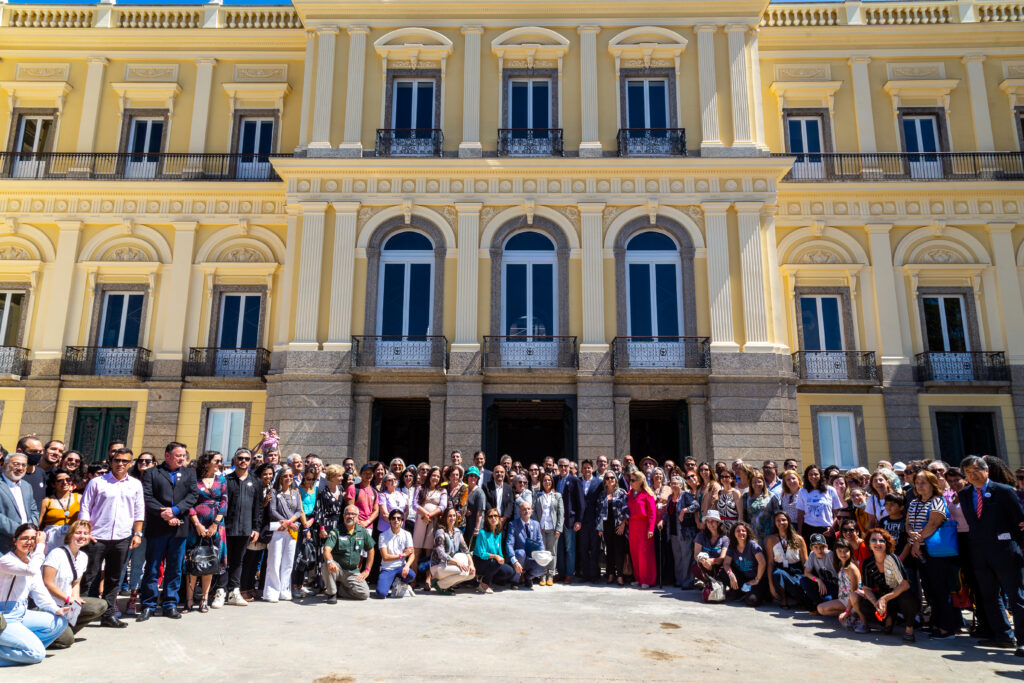
The reconstruction of the roof of this historic building is underway. All roof slabs are concrete, and 50% of the metal structure and rafters have already been installed. Services to improve the rainwater collection system and the implementation of the lightning protection system are advancing. Of the total activities contracted to restore facades and roofs of the Palace’s historic wing, 70% have already been executed. Including more complex actions, such as the metallic reinforcement of spans, the strengthening of internal masonry, and the concreting of slabs.
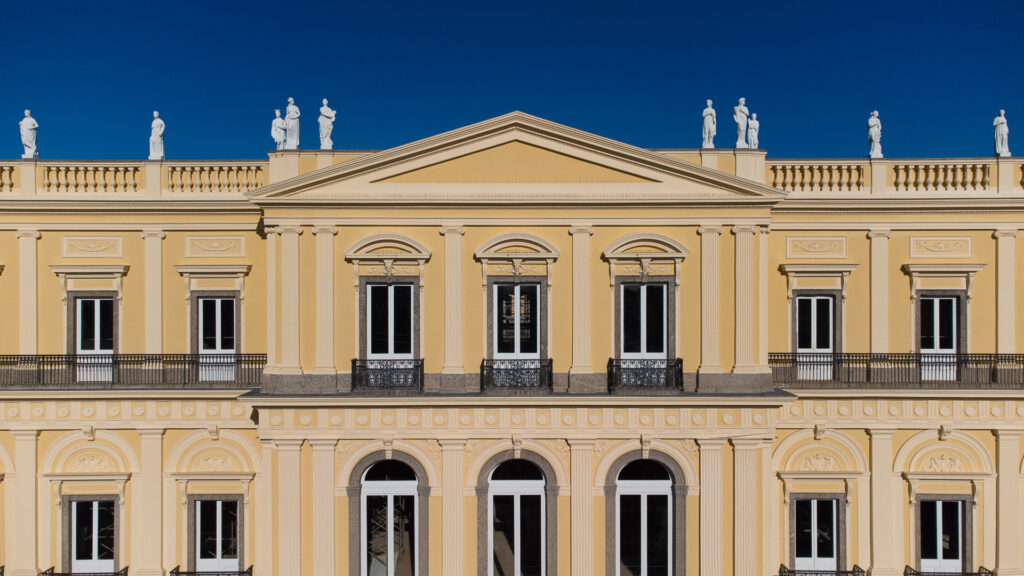
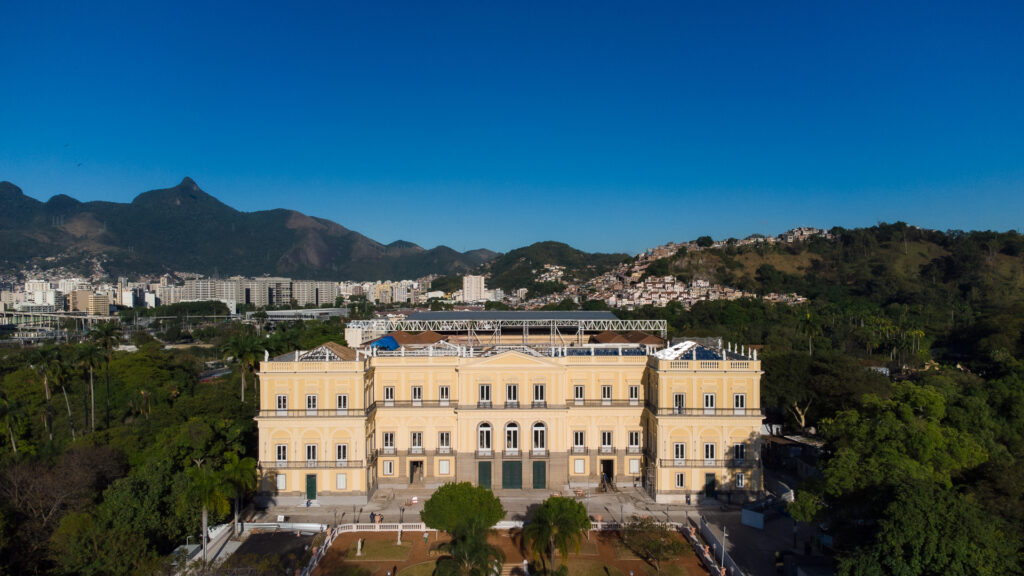
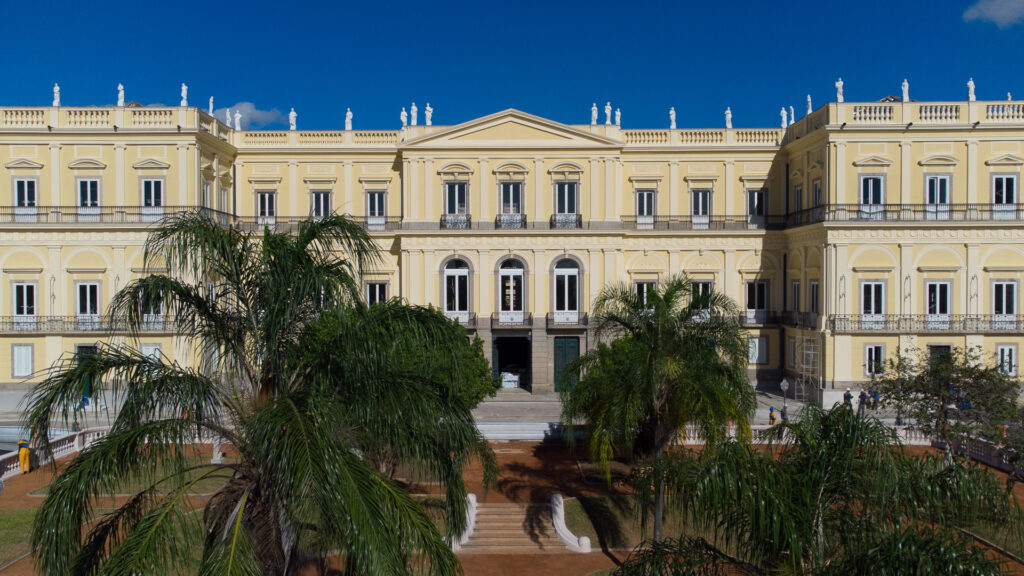
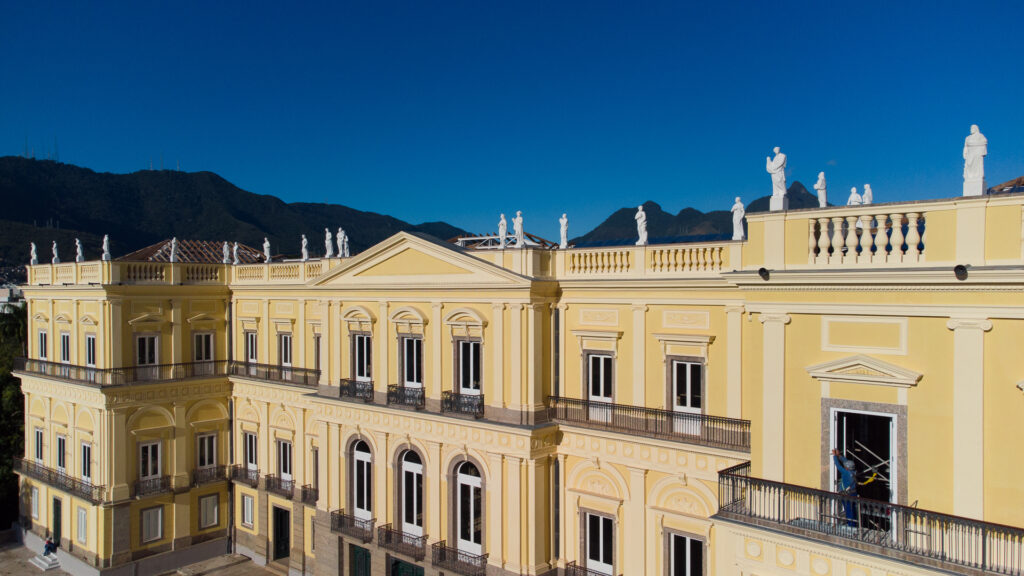
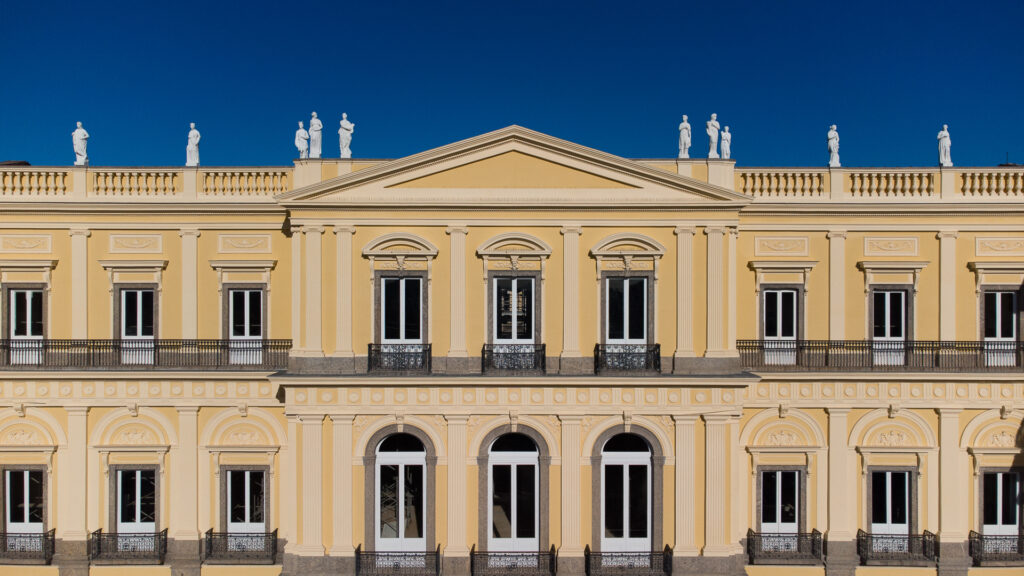
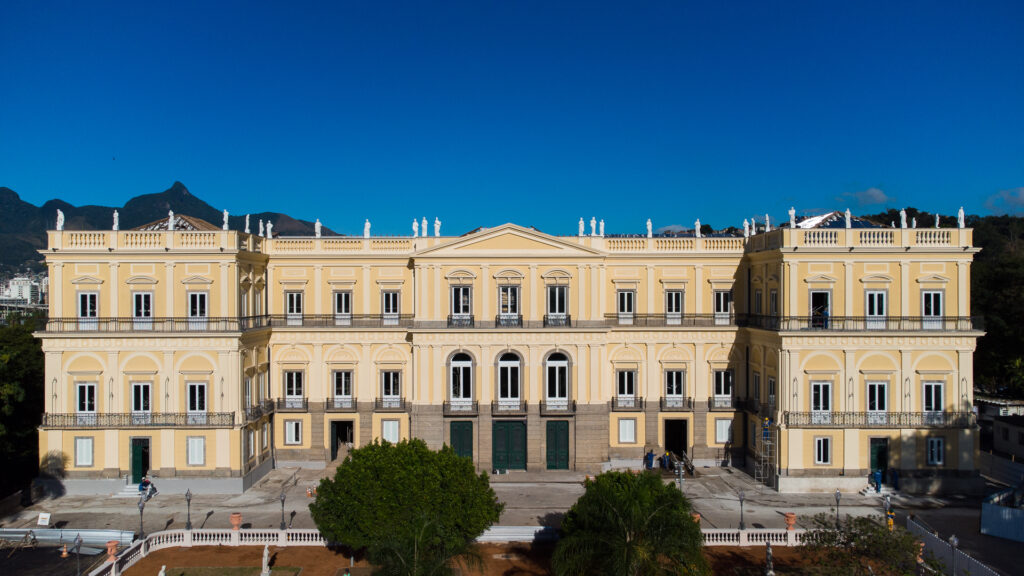
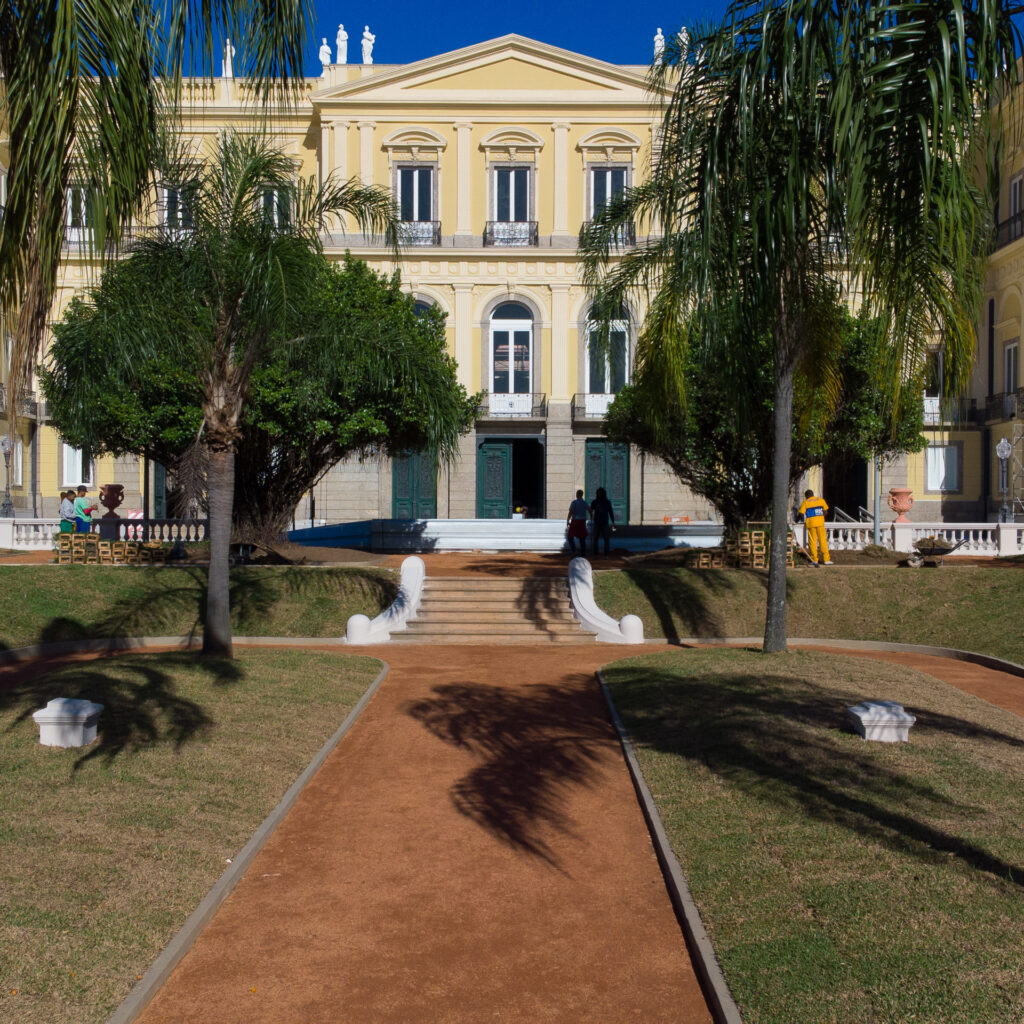
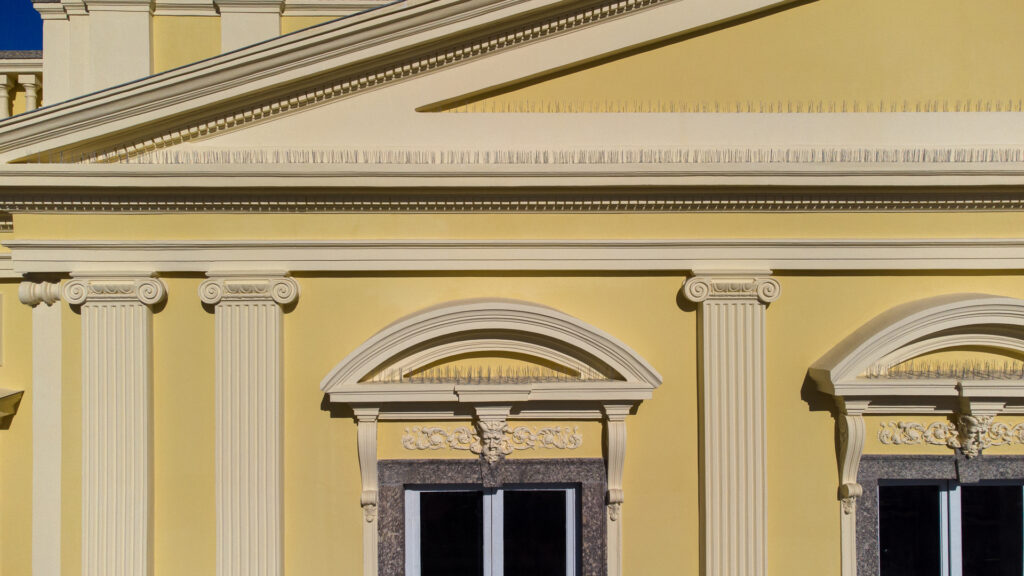
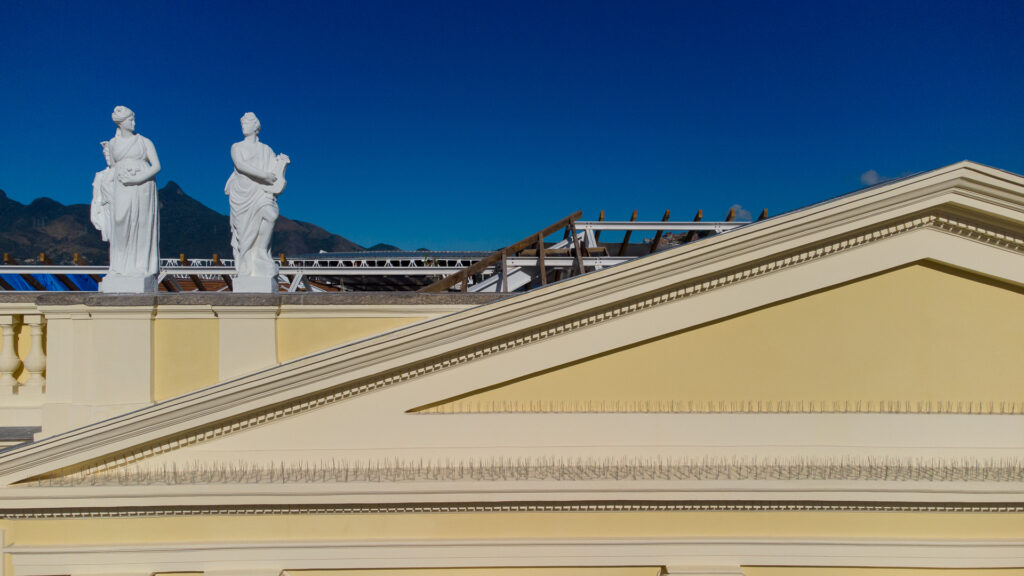
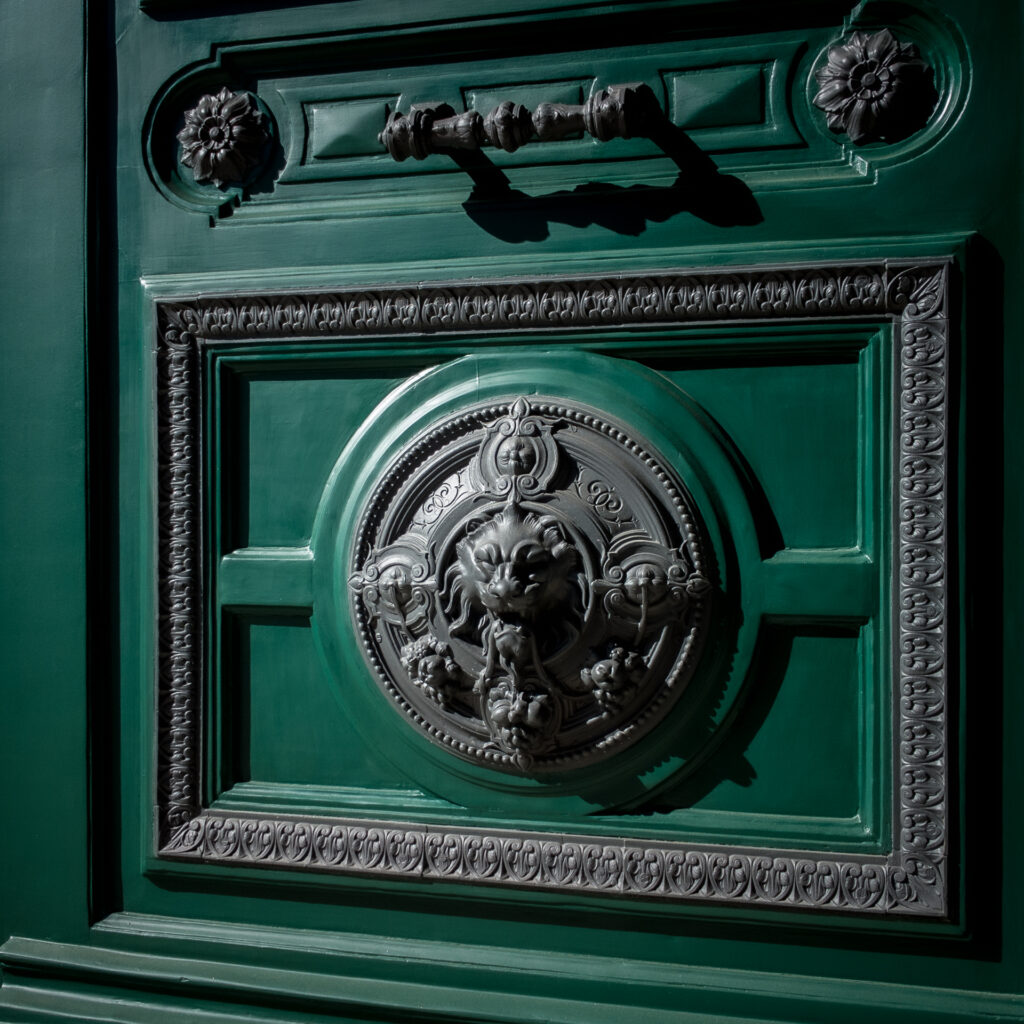
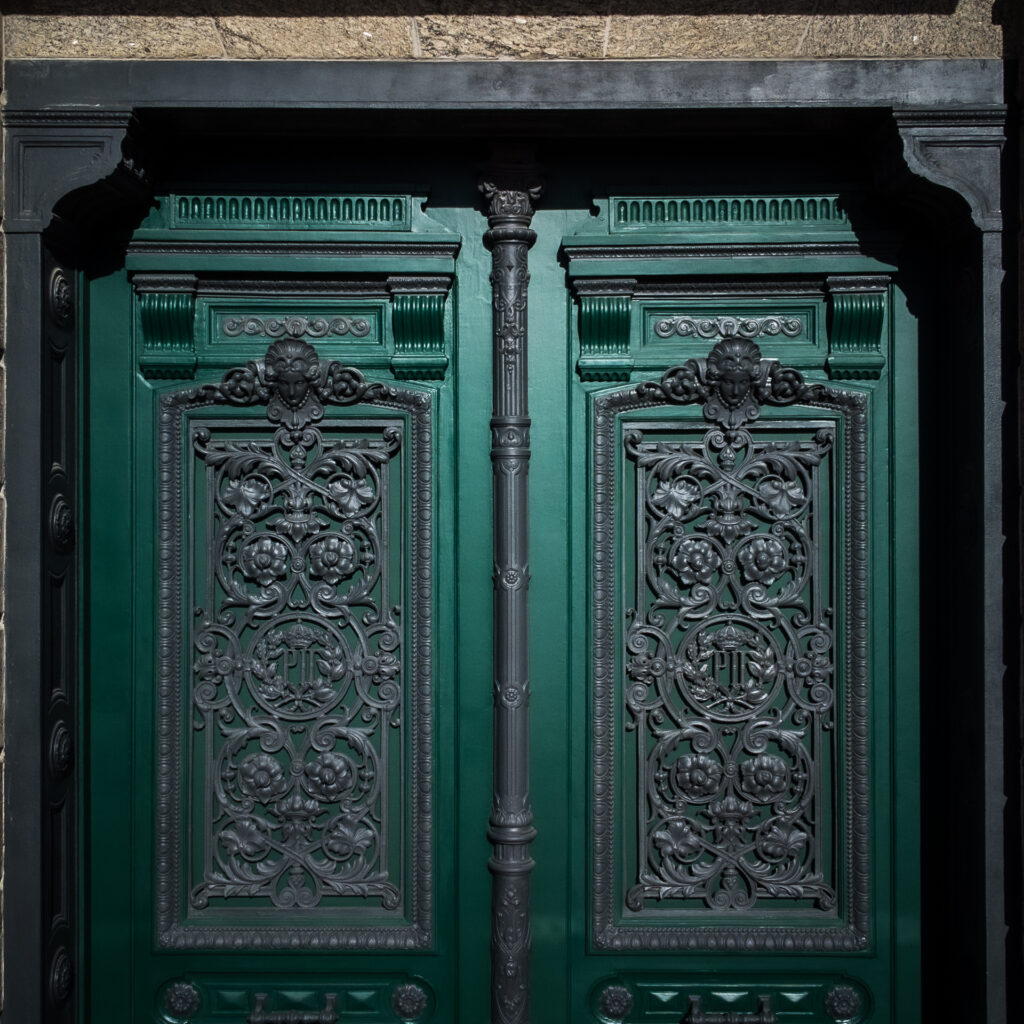
According to the president of the Association of Friends of the Museu Nacional (SAMN), Mariângela Menezes, “another very relevant action completed is the restoration of the Carrara marble centennial sculptures that were at the top of the façade. The specialized work also resulted in the production of thirty replicas of the statues, which are already at the top of the palace, returning the integrity of this heritage to society. The original sculptures are now part of the collection of historical pieces of the institution. Eight are already available for public appreciation in the Terrace Garden of Quinta da Boa Vista, integrating the programming of the #MuseuNacionalVive no Bicentenário. At the top of the Palace, thirty replicas of the statues are installed, returning the heritage integrity to society.”
“For UNESCO, this is a remarkable moment in the recovery project of the Museu Nacional/UFRJ, and it becomes even more remarkable because we are part of the celebrations of the Bicentennial of the Independence of Brazil. The efforts of all partners to make this Project feasible are a concrete response to Brazilian society and the international community, who are eager for the return of Rio de Janeiro and to Brazil’s historical and cultural heritage. In an unprecedented action, the exhibit of the sculptures in the Terrace Garden will allow the artistic quality of a statuary group that adorned the Palace for centuries to be appreciated, making the iconographic research carried out in its surroundings notorious. The open-air exhibit on the Museu Nacional Vive Project is another action that will bring the public back to the Museum by telling a little about the story of its reconstruction”, said Marlova Noleto, Director and Representative of UNESCO in Brazil.
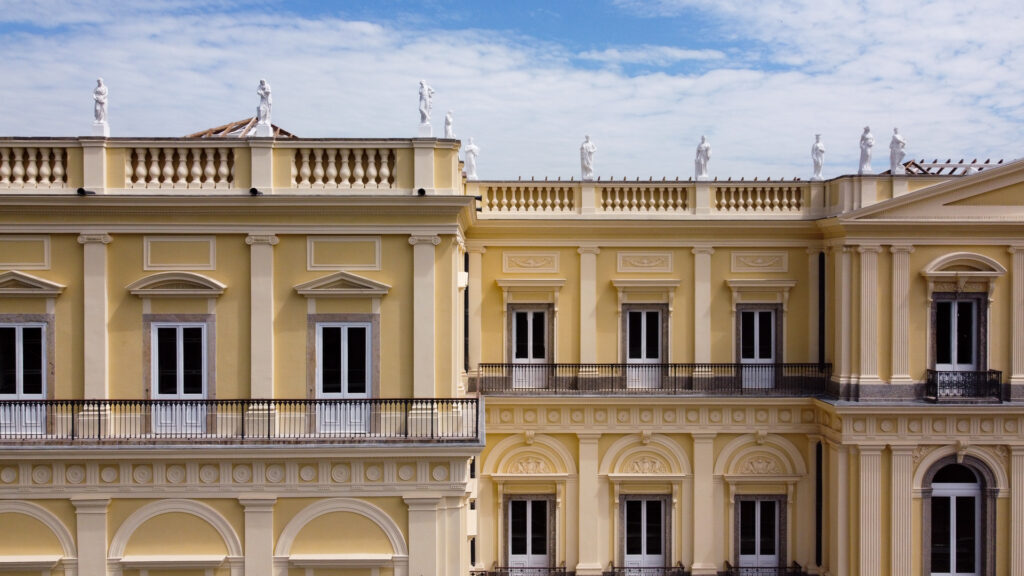
“Together, we celebrate this historic milestone of the Bicentennial of Independence and the advances in the reconstruction of the Museu Nacional/UFRJ with the delivery of the façade. It is a result of intense multidisciplinary work carried out in partnership and strong engagement of the Vale Cultural Institute and other civil society organizations. We hope this will be a great popular party, animated by projects sponsored by other partners and us. People of all ages can make discoveries, learn and have fun at the exhibits”, celebrates Hugo Barreto, CEO of the Vale Cultural Institute.
Planning and Sustainability
With a total budget of R$23.6 million, the work on the facades and roofs of the historic wing continues until February 2023.
“BNDES is totally committed to the reconstruction of the Museu Nacional/UFRJ, one of the country’s most important and symbolic cultural heritage sites In this regard, collaborating with public and private partners, we initially invested R$ 50 million for the necessary infrastructure to be rescued. But we also seek, within the Museu Nacional Vive Project, to present proposals for the Museum to have financial sustainability and administrative efficiency and be able to expand its activities to promote the culture, knowledge, and history of Brazil. As part of the work, we are assisting in structuring the Museu Nacional’s endowment fund, highlights Bruno Aranha, director of Productive and Social and Environmental Credit at BNDES.
In addition to the constant monitoring of consultants specialized in heritage preservation, all interventions are analyzed and receive technical guidance from the Risk Management, Environmental, Preventive Conservation, and Restoration Working Group of the Museu Nacional Vive Project. The WG brings together experts from institutions such as the International Center for Studies on the Conservation and Restoration of Cultural Property (ICCROM), the Center for the Conservation and Restoration of Cultural Property of the Federal University of Minas Gerais (CECOR), the National Archives and Fiocruz.
In the last ten months of work, dozens of professors and university students have already had the opportunity to see the restoration works closely, highlighting the potential that the reconstruction of the Museu Nacional/UFRJ has to also contribute to the professional and academic training of Brazilians.
Get envolved in #MuseuNacionalVive no Bicentenário. More informations are HERE




